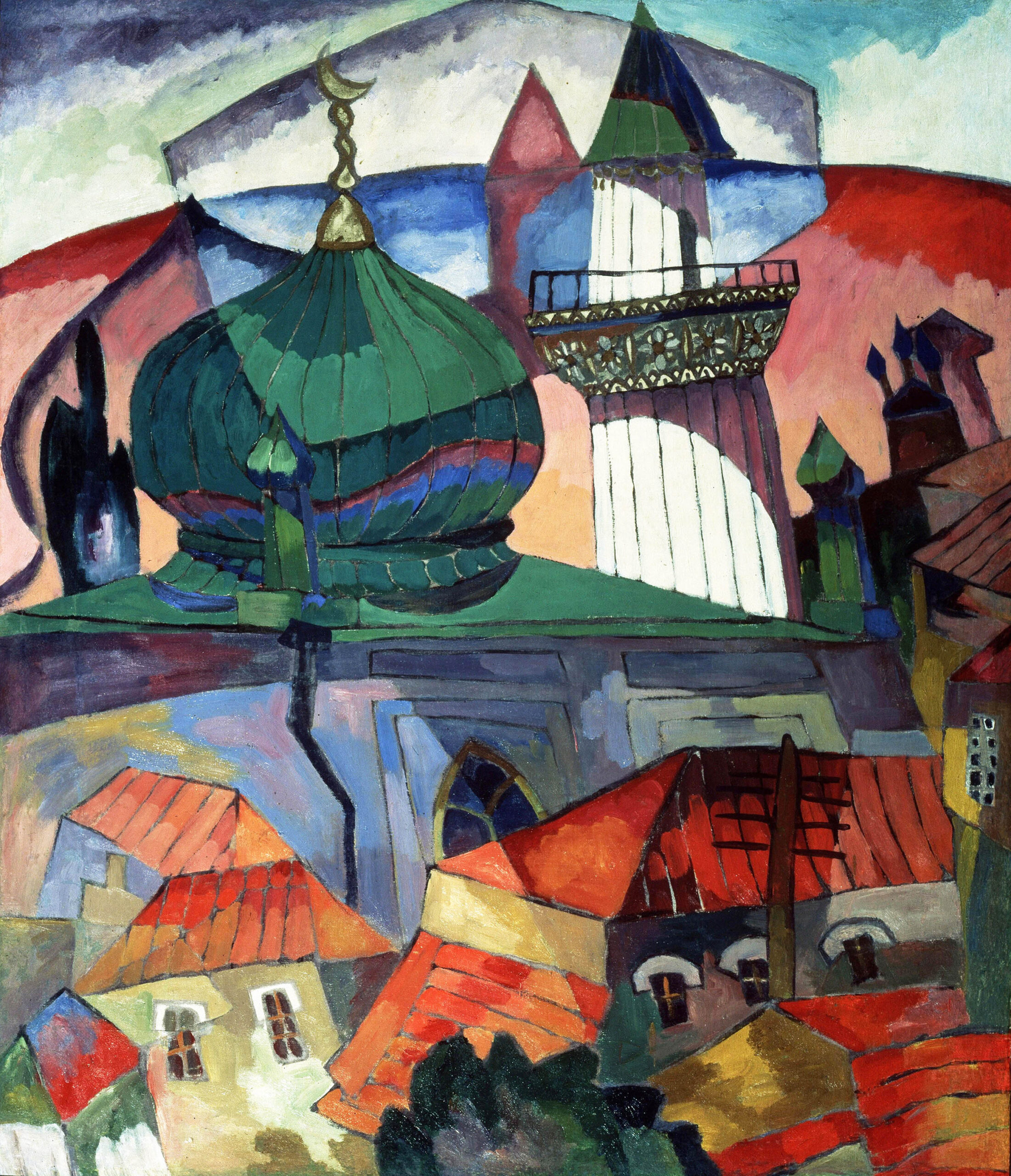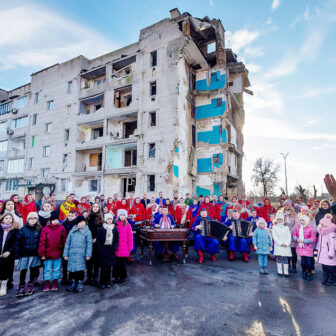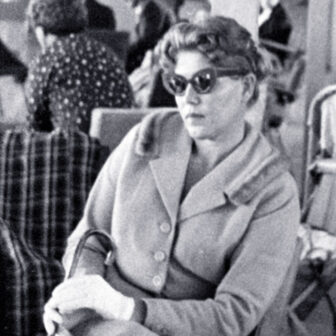While five great powers — Britain, France, the Netherlands, Spain and Portugal — were forging maritime empires between the fifteenth and nineteenth centuries, a sixth, Russia, was carving out an equally grandiose realm spanning Europe and Asia — not to mention claiming Alaska for a few decades before selling it to the United States in 1867. Along the Red Sea andin Ethiopia, Moscow also backed abortive attempts to join Europe’s scramble for another continent, Africa, in the 1880s.
Russia’s territorial grip peaked at almost twenty-three million square kilometres stretching from the Baltic and Black Seas in the west to the Pacific Ocean in the east and absorbing dozens of indigenous peoples and states. It was exceeded in total area only by the Mongol and British empires. Many subjects of that expansion still live in today’s Russia, and many former colonies or Soviet republics still lie on its borders, bringing a twofold legacy: ties of varying degrees of closeness on the one hand, and conflicts over independence and identity on the other.
The invasion of Ukraine is one such legacy, a product of the originally Muscovite empire’s reach westwards, which also encompassed Poland, the Baltic States and Finland. In three or four other directions, however, the empire knocked heads with Muslim states or peoples. Several form constituent parts of today’s Russian Federation, while Russia’s neighbours include its former Muslim outposts in Central Asia.
Those Muslim influences reverberated in last month’s massacre in a Moscow concert hall, which took 144 lives. The attack was claimed by — and mostly blamed on — the Islamic State–Khorasan, or IS–K, group, notwithstanding the Kremlin’s efforts to weave Ukraine into the plot. At least eleven Central Asian migrants, ten of them from Tajikistan, have been arrested — four for the killings and the rest for aiding and abetting.
Russia has been in Islamic State’s sights for several years, though more the result of modern Russia’s entanglements abroad than in response to the long sweep of Russian history. Those recent entanglements include the Soviet war in Afghanistan in the 1980s and Russia’s support for the Assad regime in the Syrian civil war. Russia is also helping military juntas in West Africa to fight Islamic State affiliates, notably in Mali, Burkina Faso and Niger.
Compounding Russia’s demerit points with IS–K are its closer ties to both Shi’ite Iran and the anti-Salafist Taliban in Afghanistan. Both are doctrinal and mortal enemies of IS–K: it fights the Taliban in many districts of Afghanistan, its main base, and has mounted major terror attacks against Iran. One or both of the IS–K suicide bombers who killed ninety-four people in eastern Iran in January may have been Tajiks.
IS–K jihadis’ animus towards Russia is also fed by conflicts and grievances closer to home. These include Moscow’s close ties with repressive Central Asian regimes that have clamped down on Islamic political movements.
Of these, Tajikistan — home to the accused in last month’s massacre — has been most wracked by conflict and terrorism. Deep wounds have festered since a civil war in the 1990s took tens of thousands of Tajik lives. Moscow gave substantial support to a government dominated by former communist apparatchiks against a rebel opposition that included both moderate and radical Islamists. Extreme poverty and corruption linger. President Emomali Rakhmon has destroyed most opposition.
In such fertile soil, terrorism has flourished. According to Rakhmon, Tajikistan has experienced eighty-six terror attacks over the past decade. During that period some twenty-four Tajik citizens have participated in terrorist acts in ten different countries.
Tajiks are also prominent among the sizeable Central Asian communities living in Russia. In the last census nearly a million Russian citizens identified ethnically as being from the “Stans.” Several million more non-citizens from those countries live and work in Russia, often in low-paid jobs.
Tajiks, Uzbeks, Kyrgyz and other migrants often complain of discrimination and racism. Since last month’s terror attack, police have been accused of ramping up racial profiling, conducting intrusive checks and raiding hostels for guest workers. Young male migrants, often living in ghettoised communities, are vulnerable to radicalisation. The previous large terror attack on Russian soil, the bombing in 2017 of the St Petersburg metro that killed fifteen people, was blamed on an ethnic Kyrgyz migrant.
Until recently, Russia’s biggest problems with domestic terrorism came not from Central Asia but from its own Muslim regions in the northern Caucasus region. Wars in Chechnya in the early 1990s and early 2000s caused tens of thousands of civilian deaths. Islamist groups that supported the fight for Chechen independence were largely suppressed and a compliant and brutal government with own version of sharia law installed under Ramzan Kadyrov.
During the fighting in Chechnya a series of terror attacks hit Russia. Some 170 people died in a hostage siege at a Moscow theatre in 2002, while the 2004 siege of a school seized by Chechen militants in Beslan in the north Caucasus ended in a bloodbath, with some 330 killed. Islamist groups from Chechnya and other parts of the Caucasus were responsible for several suicide bombings in and around Moscow over the following years.
The bitterness of the Chechen war has led to smouldering resistance and outbreaks of violence. Neighbouring Dagestan and Ingushetia also experienced ongoing insurgencies that were largely but not completely extinguished by 2017. Moscow likes to portray violence in the north Caucasus as linked to Islamic forces outside Russia; but religion was only one of several factors motivating armed groups in the Caucasus.
The other main Russian region with majority-Muslim republics is the Volga region of European Russia. There, the indigenous peoples in the two most populous republics, Tatarstan and Bashkortostan, speak Turkic Kipchak languages. These, and six other small Muslim republics in north Caucasus — Chechnya, Ingushetia, Dagestan, Kabardino-Balkaria, Karachay-Cherkessia and Adygeya — are among Russian Federation’s eighty-three constituent regional units.
Of the seventy-three indigenous nationalities listed in Russia’s 2021 census, twenty-five are predominantly Muslim. They range in size from the Volga Tatars with 5.5 million people (the largest minority among Russia’s 147 million population) to tiny groups in the Caucasus and Siberia. Estimates of the total Muslim population range from about fifteen million, or 10 per cent of the total, to as many as twenty-five million, as claimed by some Islamic leaders. Perhaps two million, mostly migrant workers, live in Moscow alone.
The Tatar Khanates of Kazan and Astrakhan were the first targets of Russia’s sixteenth-century eastward expansion. These khanates on the lower Volga River were themselves successors of the vast Mongol–Tatar empire, which had dominated the southern Russian and Ukrainian steppes, and to which Moscow and neighbouring principalities had been vassals for two hundred years. Their subjugation by Tsar Ivan IV (“The Terrible”) in 1552–56 preceded by a few years the first attempts under Elizabeth I to establish English colonies in North America. They were a stepping stone to the later conquest of Siberia and Central Asia.
Russia fought several wars against Ottoman Turkey, its main adversary in the eighteenth and nineteenth century. It seized control of today’s southern Ukraine at the expense of both the Crimean Khanate, ally of the Ottomans and another successor state of the Golden Horde, and the Ukrainian Cossacks.
Contesting the Caucasus region with Russia were Turkey and Persia. In the mountainous regions north of Christian Armenia and Georgia, Russia met fierce and prolonged resistance from Muslim peoples over a period of nearly fifty years until 1864. Draconian measures were used to subdue the indigenous peoples, notably Chechens, Avars in Dagestan, and Circassians (also known as Adyghes). Many were dispossessed or encouraged to leave to join fellow Muslims in the Ottoman empire, as were the Crimean Tatars across the Black Sea. In the case of the Circassians, a wholesale genocide ensued.
Russia’s drive southeast to control Central Asia lasted much of the nineteenth century. Unlike British rule in India, the conquest of Central Asia was driven less by economic enrichment than by “a blundering, gradual process” often driven by security dilemmas of the Russians’ own making.
Imperial propaganda touted Russia as “between East and West,” spreading the idea of a kinder, gentler empire closer to its subjects than the British were to Indians or African. As in the Caucasus, several bloody reprisals and massacres in Central Asia gave the lie to this claim.
Russia’s expansion entailed varying phases of toleration and repression towards Islam and its Muslim subjects. Under Ivan IV, noble Muslims were allowed to keep their titles and even their Russian serfs. The mid-eighteenth century, however, saw the destruction of most of Kazan’s 500-odd mosques.
Catherine the Great reversed such repression, issuing an Edict of Toleration of Faiths in 1773, which allowed Muslims to build mosques and worship freely. In particular, via the Central Ecclesiastical Administration of the Muslims of Russia, Islam became a pillar of a conservative imperial order.
Much later, after the Bolsheviks had re-established control over the Empire’s southern holdings in the 1920s, Islam was severely repressed along with other religions. Subsequent decades brought greater tolerance, although Islam, like Christianity, was not encouraged and was strictly controlled.
The most traumatic moment for some Muslim peoples was their deportation to Central Asia and Siberia towards the end of the second world war. This was a collective punishment ostensibly for their alleged collaboration with German invaders, but more likely because Stalin thought their loyalty would be suspect in the event of a war with Turkey. Several smaller minorities from the north Caucasus and Crimea were deported en masse thousands of kilometres east, with large numbers of deaths among Crimean Tatars, Kalmyks, Chechens, Ingush, Balkars, Karachays and Meskhetian Turks. All except the Buddhist Kalmyks were Muslim.
In the post-Soviet period, and particularly under Vladimir Putin, Russia has in many ways reprised Catherine’s approach. Like the later Tsars, the Kremlin has supported loyal Muslim muftis and local leaders in exchange for rebuffing forms of Islam seen as suspect and promoting patriotism among the faithful.
Official policy seeks to distinguish a “good” Islam, even described as a Russian Islam, from foreign and radicalised versions. But recent laws on extremism make it easy to criminalise any belief, individual, writing or group (even the amorphous LGBTI+ movement has been declared extremist). It can be difficult for Muslims to know exactly which texts or materials have been, or might be, deemed to have crossed a red line. The state risks making new enemies by colluding with handpicked loyalists, particularly as Islam in Russia is diverse both in character and institutionally, with many personal and factional rivalries.
The “Islamic island” of Tatarstan, Bashkortostan and surrounding areas has long been regarded as more docile and less radical than the north Caucasus Muslims. It is also much more prosperous and quite secularised, like much of the ethnic Russian population. But even Tatars have been involved in isolated terrorism in the last decade. And in January this year demonstrations took place in Bashkorkostan over the jailing of a local Bashkir activist for “inciting inter-ethnic hatred.”
The millions of migrant workers and first generation citizens from Central Asia now form the majority of worshippers in mosques. Their conditions and status make them more susceptible to extremist messages.
Today’s Russian Federation is far more Russian in an ethnic sense than either the Soviet Union or the late empire. But the state still needs to balance appeals to ethnic nationalism with a broader civic-based identity offering inclusion. Demographic trends will change the dynamics. While Muslim families have generally high birth rates, ethnic Russian birth rates are falling (the total number of ethnic Russians fell by five million between 2011 and 2021). Conservative estimates forecast that by 2050 Muslims could make up a third of Russia’s people.
A distinctive stream of conservative Russian nationalism — Eurasianism — seeks to define Russia as a somewhat mystical geopolitical civilisation embracing a mixed ethnic heritage. In some forms it extols the virtues of the martial spirit of the Mongol and Turkic steppe conquerors as opposed to the decadent West. It’s hard to take this often eclectic set of ideas seriously, other than as a justification for a return to empire and a rejection of Western ideas of democracy. It has, however, become influential in official thinking and ideology.
“Islam is a bright element of Russia’s cultural code, an integral, organic part of Russia’s history,” Putin declared in 2013, and Islamic leaders have also pushed Eurasianist ideas. In supporting Russia’s invasion of Ukraine, the head of Tatarstan, Rustam Minnikhanov, cited with approval the Russian Eurasianist historian Lev Gumilev: “Tatars are in our blood, our history, our language, our worldview. Whatever the real differences with the Russians, the Tatars are not a people outside us, but within us.”
Eurasianist ideas tie in with Russia’s pitch to build alliances abroad. Russia’s key foreign policy strategy document defines Russia as “a unique country–civilisation, a vast Eurasian and Euro-Pacific power that brings together the Russian people and other peoples belonging to the cultural and civilisational community of the Russian world.” It counterposes Western hegemony with a “Greater Eurasian Partnership” alongside China, the Muslim world and the “Global South.”
Russia’s appeals to the Global South have become more urgent since Western countries responded robustly to Russia’s illegal invasion of Ukraine. A very long list of peoples and countries would be astonished by Russia’s pitch that it has never (in the words of foreign minister Sergei Lavrov) invaded anyone. Nevertheless, this appeal gets traction among some who see Russia as inheriting the Soviet legacy of support for anti-colonial struggles — as it does for those in the Muslim world with painful memories of US unilateralism and interventionism.
The war in Ukraine has drawn varied reactions from Muslim leaders inside Russia. Some have simply called for peace; others have been hawkish in support of the invasion.
Muslim leaders appear largely on board with the “traditional values” agenda promoted by the Kremlin: banning same sex marriage, anti-LGBTI+ measures, espousing traditional roles for women, even partially decriminalising domestic violence. To that extent, conservative Muslims can buy into Kremlin’s framing of the invasion as a defensive operation against Western hostility and decadent Western values. Or against being forced to hold gay pride parades, as the Russian Orthodox Patriarch Kirill so eloquently put it.
Nevertheless, there is a tension between the big tent of Eurasianism and civic Russianness, on the one hand, and the more narrow Great Russian nationalism that lies behind the invasion. The latter rests on historical claims and narratives of nationhood, particularly the old imperial notion that Ukrainians and Belarusians are not really separate peoples but part of one “triune” Russian nation. Such emphasis, which also boosts the primacy of the Orthodox Church, can serve to exclude non-ethnic Russians and the non-Orthodox.
The war in Ukraine has opened more palpable fissures for some of Russia’s minority regions. Muslim republics in the Caucasus are among those suffering a much higher proportion of deaths, mainly because poverty-fuelled mobilisation and enlistment rates have been higher. Protests have occurred in Dagestan as well as in non-Muslim Siberian republics such as Buriatiya and Sakha.
The war has also amped up an uber-patriotism among ethnic Russian nationalists that plays into xenophobic and anti-migrant sentiments. Deep-seated opposition to migration from Central Asia already existed before the 2022 invasion, with polls in 2021 showing 26 per cent of people opposing any migration at all.
Russia’s own labour shortage makes it hard to cut off this source of cheap labour. Meanwhile, the army’s need to replace the hundreds of thousands of casualties suffered in Ukraine has led it to dangle offers of citizenship to migrants if they enlist. Central Asian migrants are also being hired to work in Russian-occupied Ukraine, despite dangerous conditions and warnings from their governments not to go there.
For Central Asian governments, particularly those of Kyrgyzstan, Tajikistan, and Uzbekistan, migration to Russia serves as a pressure valve to ease frustrations fuelled by unemployment among a very young population (the median age is twenty-seven compared to forty-one in Russia and thirty-eight in Australia). Migration also brings a major source of income to these countries through remittances, accounting for one quarter to one third of GDP in Tajikistan and Kyrgyzstan.
These factors, along with political and military support, help keep Central Asian regimes within Moscow’s orbit. But the invasion of Ukraine has made them wary of being too dependent. All five “Stans” abstained, or were absent, rather than voting with Russia against consecutive UN General Assembly resolutions condemning the invasion of Ukraine. They have also taken cautious steps towards diversifying their ties and avoiding the economic effects of Western sanctions on Russia.
Against this background, the course of the war, developments in Central Asia and the Caucasus and complex demographic trends will continue to pose a challenge for the Kremlin as it strives to maintain the allegiance of its diverse Muslim communities. •




